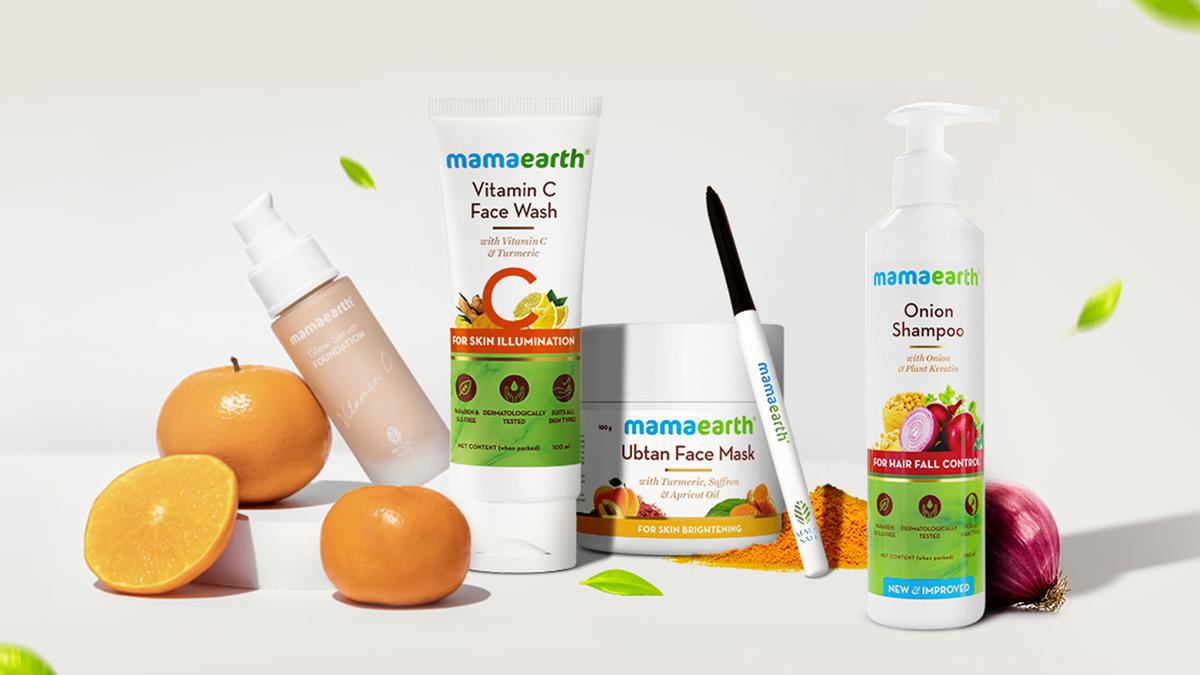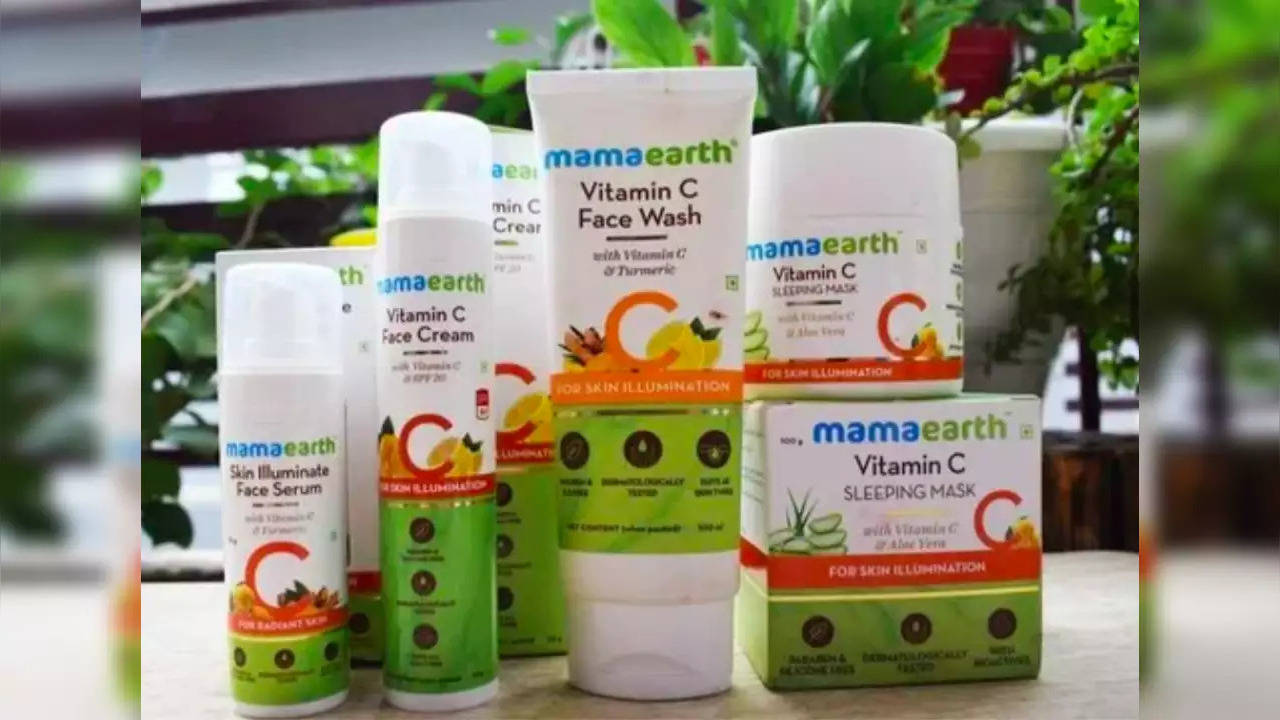Mamaearth’s Much-Anticipated 1701 Crore IPO And The Overwhelming Questions; A Company Built On Real ‘Toxic Free’ Products Line Or A Marketing Mirage Gimmick With Even More Budget To Marketing According To DRHP Filed
In the fast-approaching dawn of Mamaearth's initial public offering, IPO, a whirlwind of anticipation and excitement (scepticism) envelopes the retail investors. Mamaearth is a brand that has built on heartfelt narratives, promises of toxin-free products, and a deep emotional connection with parents, and has managed to captivate a massive following in a relatively short span. However, as the curtain lifts on this IPO, it's time to explore the truth, separating the emotional marketing facade from substantive reality. Is Mamaearth truly a pioneer in innovative, toxin-free products, or has it woven a marketing mirage? And if yes, then how may it have managed to paint a positive and profitable rapport in the market such that it can launch an IPO based on this reality? One conspicuous omission in their financial report is the lack of expenses for the purchase of raw materials. This omission raises a pertinent question: How can Mamaearth claim to be a trailblazer in creating toxin-free products when their financial disclosures do not account for raw material expenses?

Mamaearth’s IPO, in less than 24 hours, the Indian public is poised to witness the much-anticipated initial public offering (IPO) of Honasa Consumer Limited, more commonly recognized as Mamaearth.
The IPO has generated a whirlwind of anticipation, particularly in light of such positivity surrounding the company; however, before making any investment decisions, it is imperative to delve into the heart of the Mamaearth narrative.
Is it truly a remarkable company, a paragon of innovation and quality, or is it a dazzling spectacle of “Marketing Goodness” designed to attract Indian consumers?
Let’s explore the complicated story of Mamaearth.
One of the fundamental questions that needs to be raised is whether Mamaearth has genuinely innovated within the market.
The company’s website proudly boasts about its meticulous research and development efforts; however, upon closer inspection of its Draft Red Herring Prospectus (DRHP), it becomes evident that Mamaearth holds no patents over its product formulations and has not even initiated any patent applications.
This contradiction raises profound concerns regarding the authenticity of their claims and whether they are misleading customers with their proclamations of exhaustive research.
The core query that emerges is this: Did Mamaearth truly introduce groundbreaking products that were previously absent from the market?

The Contradictions On The Website And DRHP
The DRHP indicates that Mamaearth outsources the manufacturing of all its products to third-party manufacturers and does not possess any in-house manufacturing facilities.
This revelation casts a shadow over their assertion of developing world-class products through cutting-edge research because how can they genuinely be innovating when they are not even manufacturing their products themselves?
The disclosure prompts the question of whether Mamaearth is indeed blazing new trails or merely capitalizing on an emotional marketing ploy.
The disclosure in the DRHP goes further to state that Mamaearth’s contracts with third-party manufacturers are non-exclusive; therefore in simple terms, this means that these manufacturers can work with other companies as well, thus challenging Mamaearth’s claims of having unique formulations.
In essence, other companies can potentially use the same formula, and Mamaearth could conceivably source formulas from external entities; hence, the question of the authenticity of their products raises doubts about whether Mamaearth was truly the first to bring toxin-free products to the market.
Website Claims And DHRP Truth
Exploring Mamaearth’s corporate information, as presented in the DRHP, reveals another layer of complexity; the document suggests that the company is primarily engaged in trading a variety of beauty and personal care products rather than being a hub of formulation and product innovation, as alluded to on its website.
The discrepancy further spotlights the contradiction between their marketing claims and their actual business operations.
Hence, are they truly creating unique formulations, or are they simply trading existing beauty and personal care products under their brand?

Claims And Raw Materials
One conspicuous omission in their financial report is the lack of expenses for the purchase of raw materials; this omission raises a pertinent question: How can Mamaearth claim to be a trailblazer in creating toxin-free products when their financial disclosures do not account for raw material expenses?
This lack of transparency surrounding their manufacturing process and costs is indeed perplexing.
The DRHP shines a spotlight on Honasa Consumer’s ambitious launch of new Stock Keeping Units (SKUs) during the past year. The numbers presented are staggering, indicating a prolific introduction of new SKUs that significantly outpaces the industry median.
This achievement would be remarkable for any company. However, what makes this all the more perplexing is that Mamaearth lacks in-house manufacturing facilities and has not patented any of its product formulas.
Thus, it raises a fundamental question: How did they manage to introduce such a diverse range of products that they claim to be the outcome of their “special formulation”?
These revelations challenge the notion that Mamaearth possesses a unique formula for its products. It prompts speculation that similar products may already exist in the market, and Mamaearth has seized the opportunity to “be first” rather than “be the best.”
There is nothing inherently wrong with contract manufacturing; however, the use of non-exclusive contracts raises concerns about Mamaearth’s commitment to their supposed “special toxin-free formulations.” Is Mamaearth genuinely a market leader in toxin-free products, or is it primarily a marketing game?

Acquiring A Marketing Platform
Further perplexity arises from Honasa Consumer Limited’s acquisition of “Momspresso,” a content platform. This particular acquisition incurred a significant loss, serving primarily as a vehicle to promote Mamaearth products.
In contrast, their other acquisitions, such as Dr. Sheth’s and BBlunt, maintain an individual identity and product portfolio; the concentration on brand awareness at the expense of product individuality is a matter that deserves scrutiny.
The Matter Of Fund Allocation After The IPO
The DRHP discloses the allocation of funds from the IPO for “Advertisement expenses towards enhancing the awareness and visibility of our brands.”
Additionally, it earmarks capital expenses for setting up new Exclusive Brand Outlets (EBOs), investments in subsidiary companies, and unspecified inorganic acquisitions.
Curiously absent from this allocation is any explicit intention to invest in their purported “specialized toxin-free formula,” a formulation that, remarkably, they have not even patented.
This allocation raises significant doubts about Mamaearth’s priorities. Is their primary objective to create a brand empire rather than produce genuinely toxin-free products?
All of these revelations, gleaned from the DRHP, only scrape the surface of the questions and uncertainties that swirl around Mamaearth’s IPO; the disclosure of its substantial marketing expenses as a percentage of its revenue reveals a company heavily invested in promoting its brand.
However, it simultaneously prompts questions about their margin sustainability; if such a significant portion of revenue is funneled into advertising, it leaves one pondering where the actual profit margins are derived.
Furthermore, Mamaearth has positioned itself as a “Digital First” brand, a direct-to-consumer (D2C) company, and prides itself on selling directly to consumers.
However, a closer examination of the DRHP shows that a significant portion of their revenue is derived from offline channels, standing at 35.39% of the revenue from operations during the six-month period ending September 30, 2022.
This raises questions about the margin erosion that may occur when dealing with offline channels with multiple intermediaries.

Valuation Concerns
The IPO has sparked the elephant in the room: the issue of valuation; the public is wary of inflated valuations, and Mamaearth’s IPO is no exception.
If the valuations fail to align with the company’s actual performance in the coming years, it could spell trouble for investors; the comparison to Nykaa’s IPO, which yielded substantial returns for early investors, raises concerns about whether Mamaearth is aiming to replicate a similar windfall for its early-stage backers.
The potential for Shilpa Shetty Kundra, Snapdeal co-founders Kunal Bahl and Rohit Bansal to make significant returns from the IPO leaves the impression that this may be more of a Festival Bumper Bonanza for the early investors rather than an opportunity for retail investors.
Legitimate Questions
The Mamaearth IPO is laden with questions and concerns; it demands scrutiny and critical analysis.
While it is not inherently wrong for a business to reward its early-stage investors, the allocation of resources and priorities should be equitable and transparent, and investors and consumers alike are justified in seeking answers to these questions before deciding to engage with Mamaearth.
.
Mamaearth’s IPO Is A Case of Emotional Marketing versus Substantive Reality
Mamaearth has succeeded in carving out a distinctive position in a saturated market by tapping into the emotions of parents.
Their website tells a heartfelt story of parental concern and the desire to provide toxin-free products for the well-being of children; this description resonates with parents and has garnered a significant following, with over 1.5 million customers showing interest since the company’s inception in 2016 with a modest investment of INR 90 lakh.
While the emotional narrative is compelling, deeper research exposes unsettling details.

Mamaearth claims full transparency by listing all product ingredients on their packaging, but without an in-house manufacturing facility, they cannot guarantee this transparency and the absence of patents for their formulations raises doubts about how unique their products truly are.
Hence, Mamaearth’s emotional marketing is pitted against the demand for factual evidence; customers need concrete proof of the company’s commitment to quality and safety, not just heartwarming stories.
The extensive marketing costs, accounting for a significant portion of their earnings, suggest a focus on maintaining reputation rather than on product quality and innovation.
The IPO of Honasa Consumer Limited, Mamaearth’s parent company, introduces a fresh layer of complexity; the company’s massive advertising expenses, amounting to 42% of their total revenue in 2022, raise questions about the sustainability and transparency of their business strategy.
Also, the revelation that Mamaearth outsources all product manufacturing to third-party manufacturers, without owning any in-house facilities, transforms them into a marketing company more than a product manufacturer; hence, the significant portion of their revenue poured into marketing further stresses the disparity between their claims and their operations.
The Last Bit,
The authenticity of Mamaearth’s emotional appeal hinges on the transparency of its foundation; to gain the trust of investors and consumers, Mamaearth must address these concerns and demonstrate its commitment to quality and safety.
Until these questions are answered with transparency and authenticity, it remains challenging to assess the depth of their dedication to their customers.
Transparency is the linchpin upon which trust is built, not merely a catchphrase. Mamaearth needs to ensure that its emotional appeal is substantiated by tangible, transparent practices, especially in a market as sensitive as baby products, skincare, and hair care.




